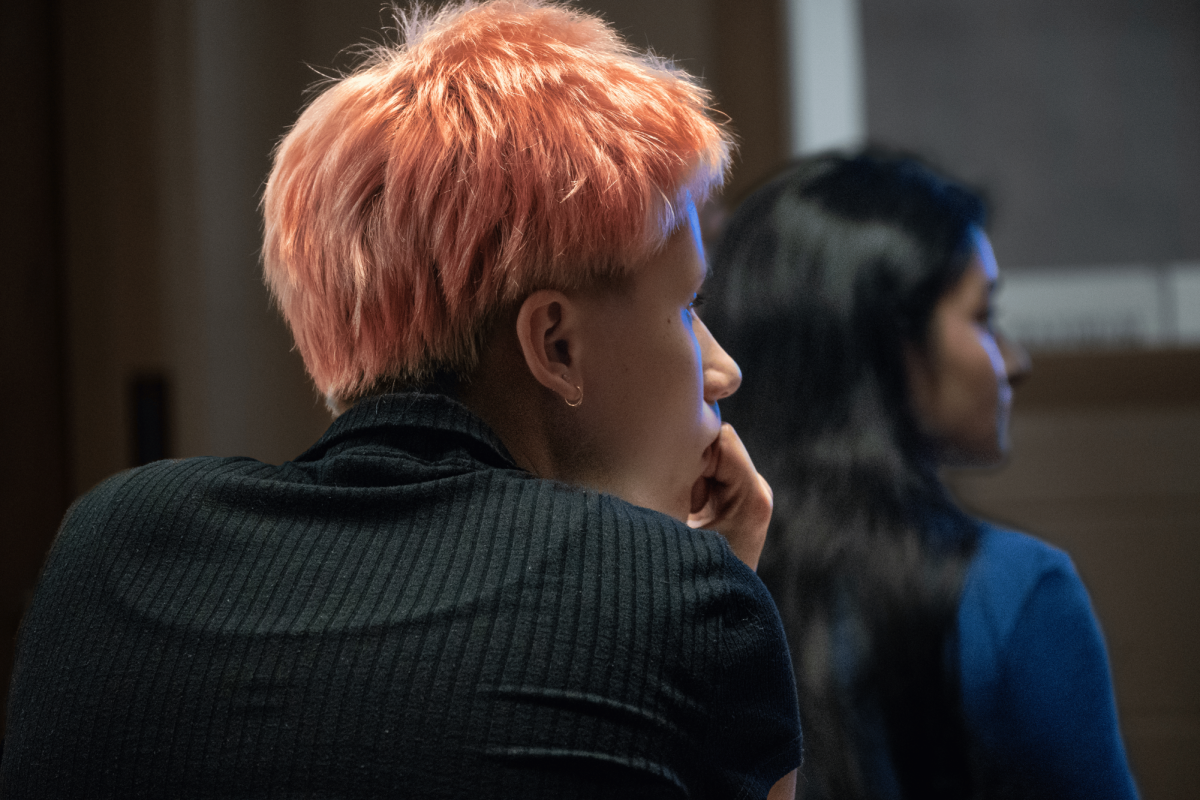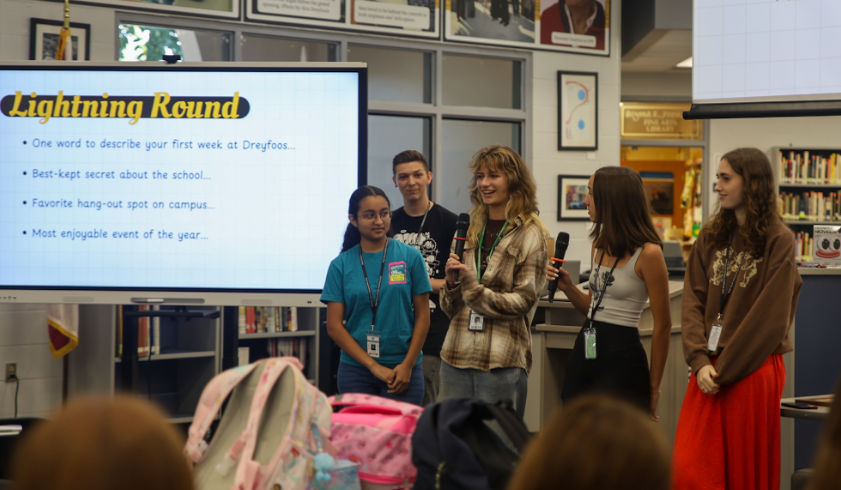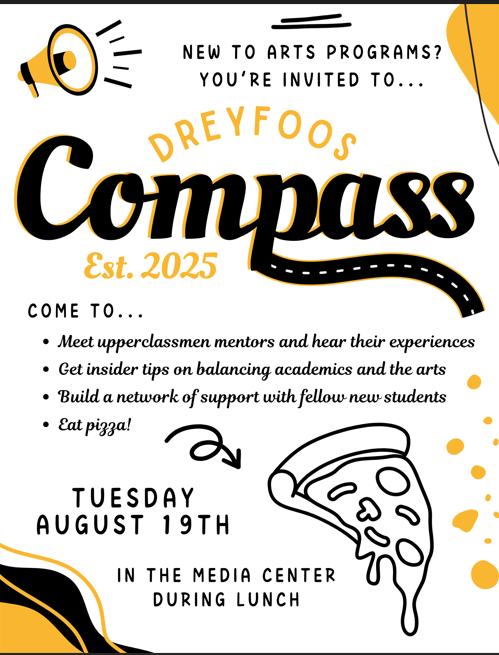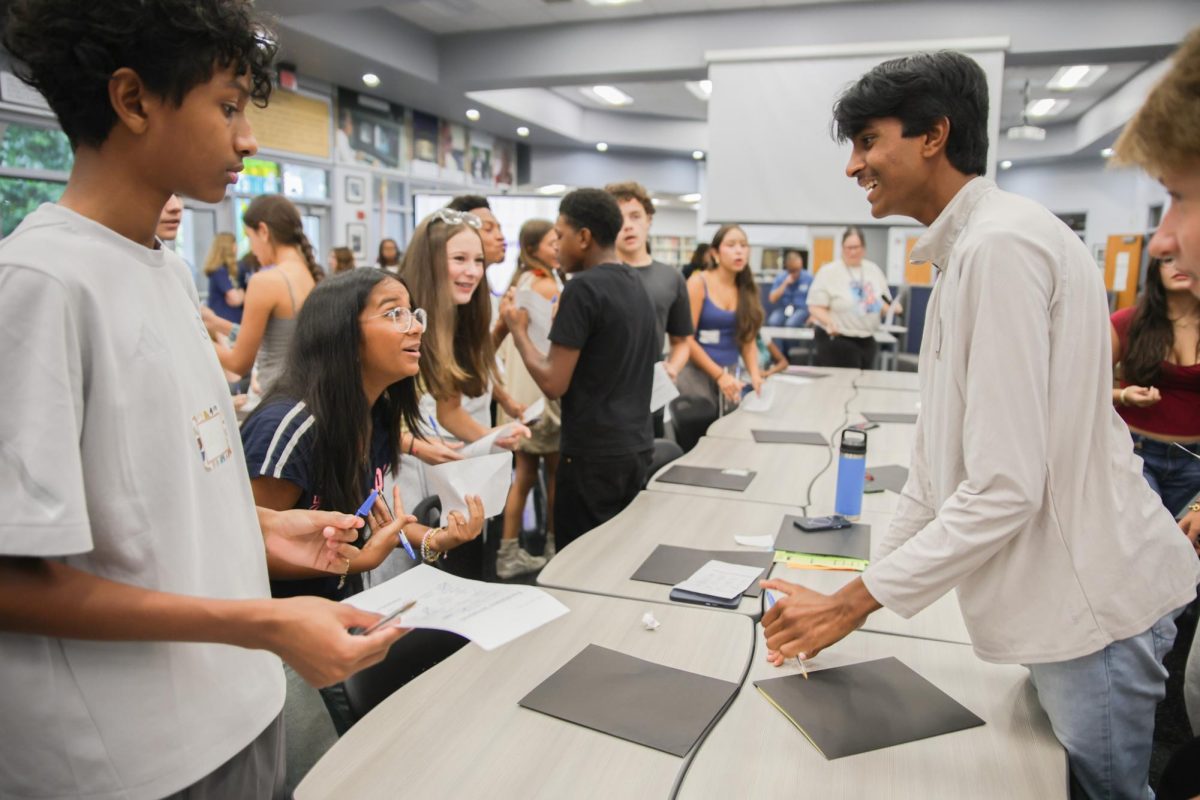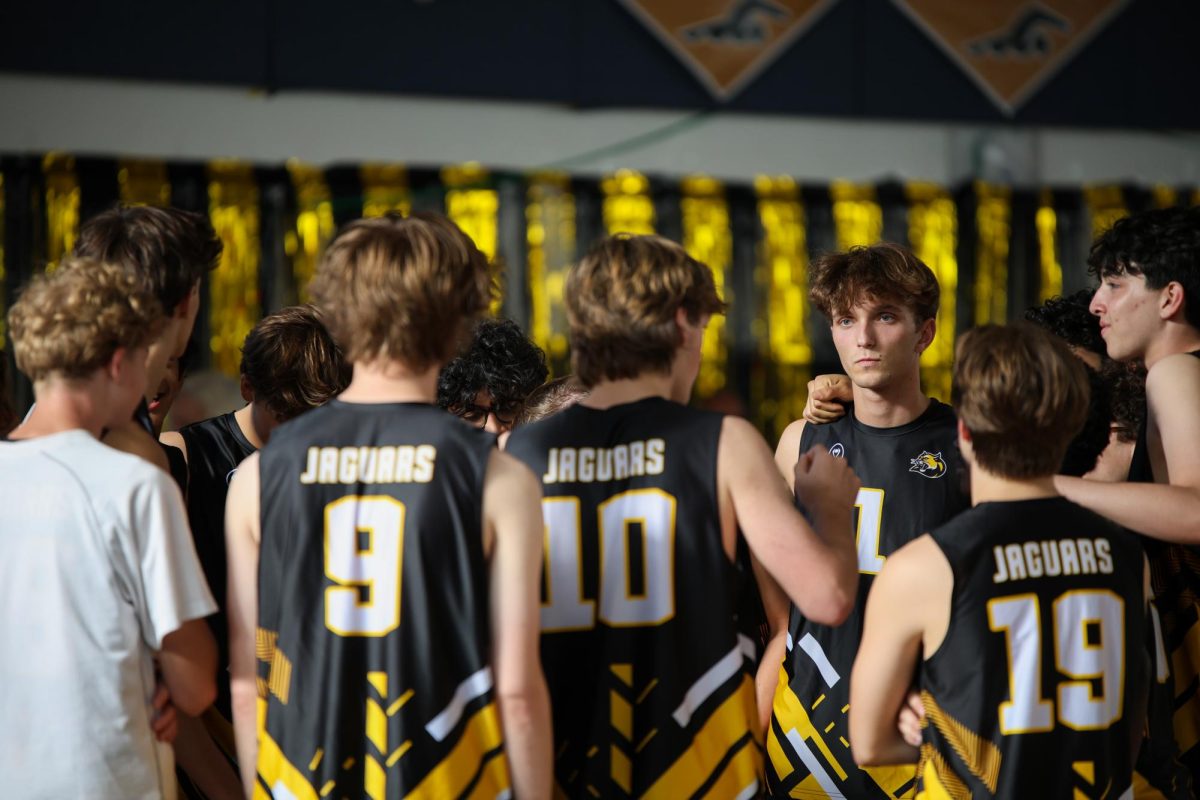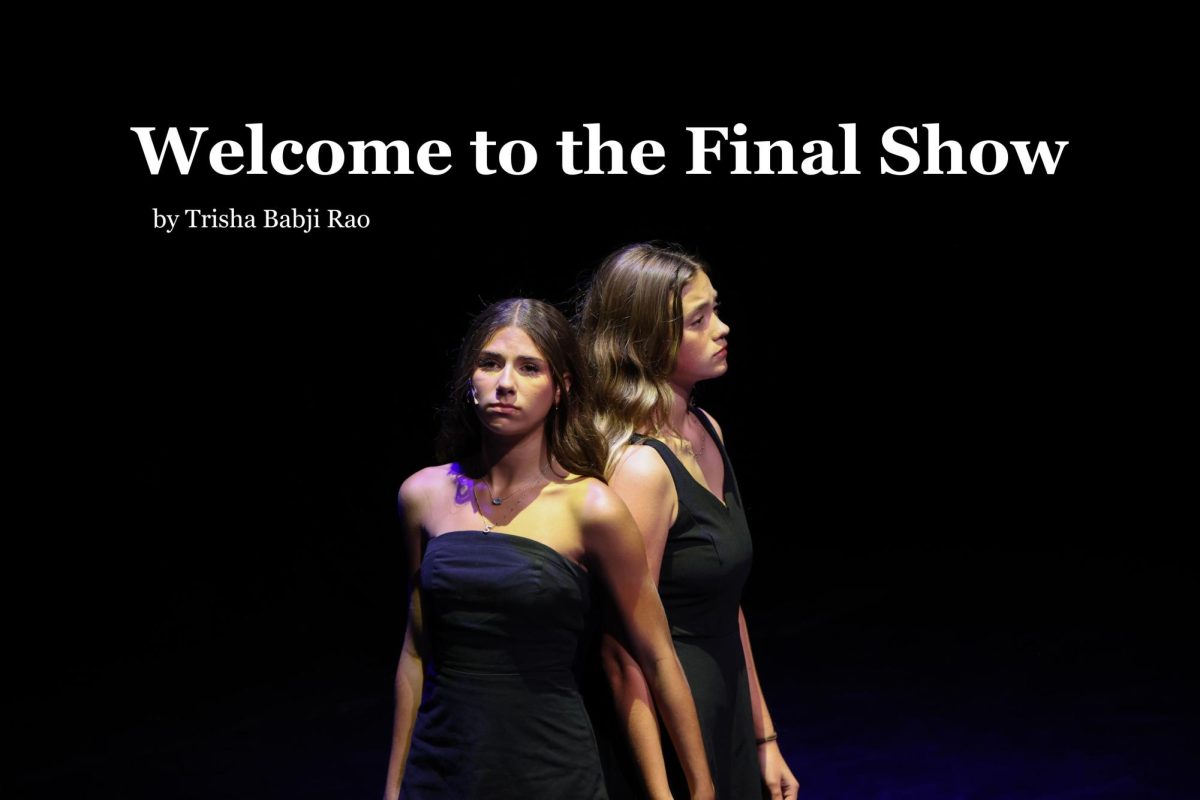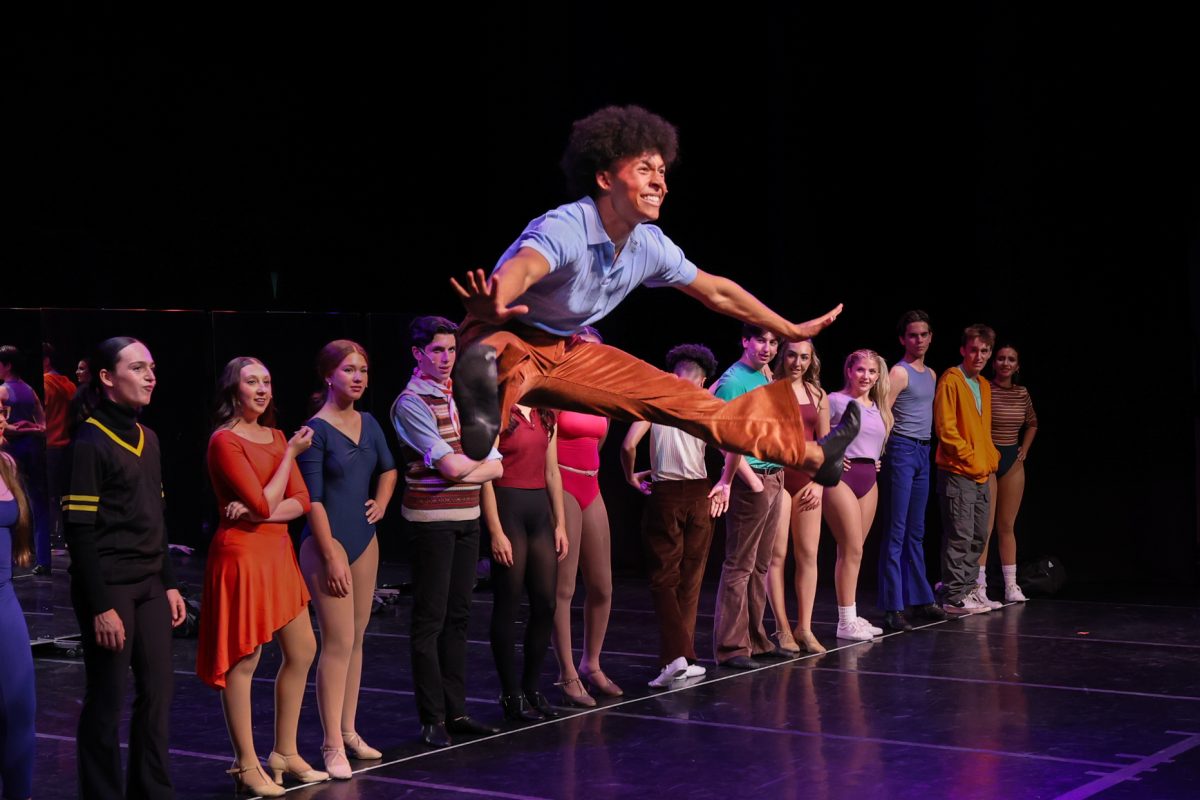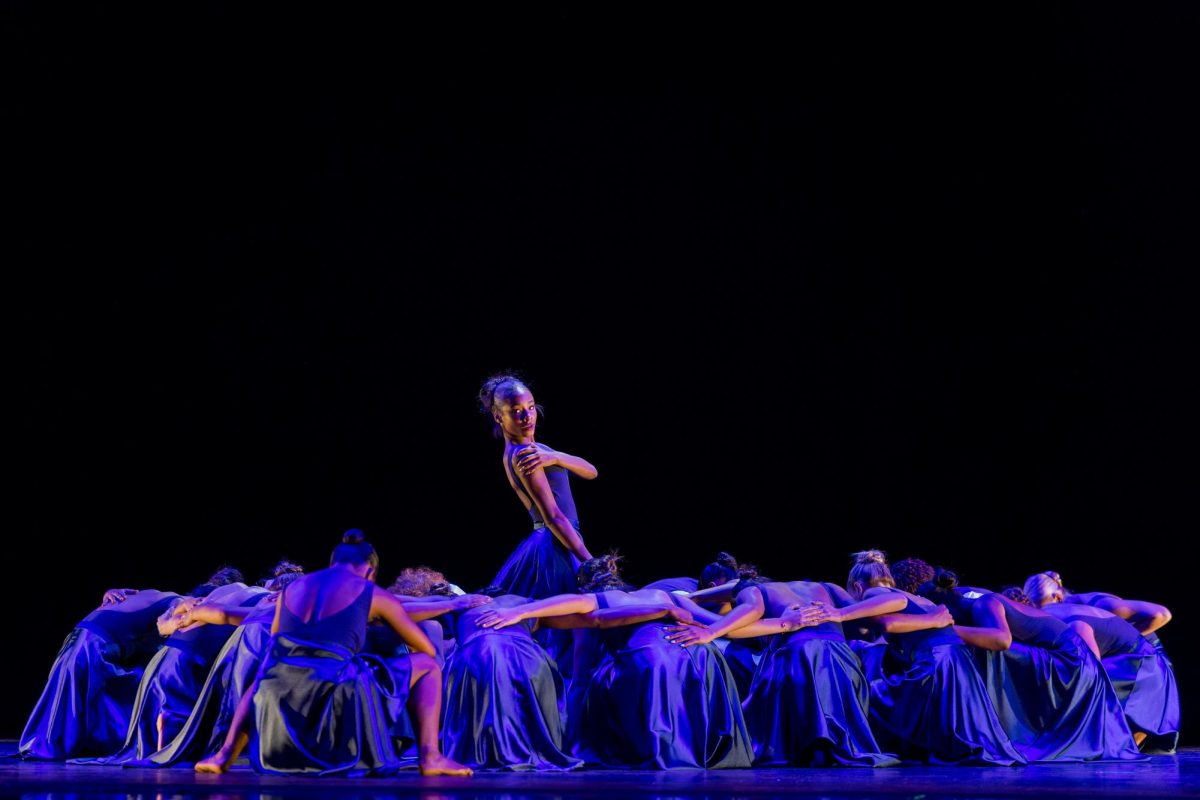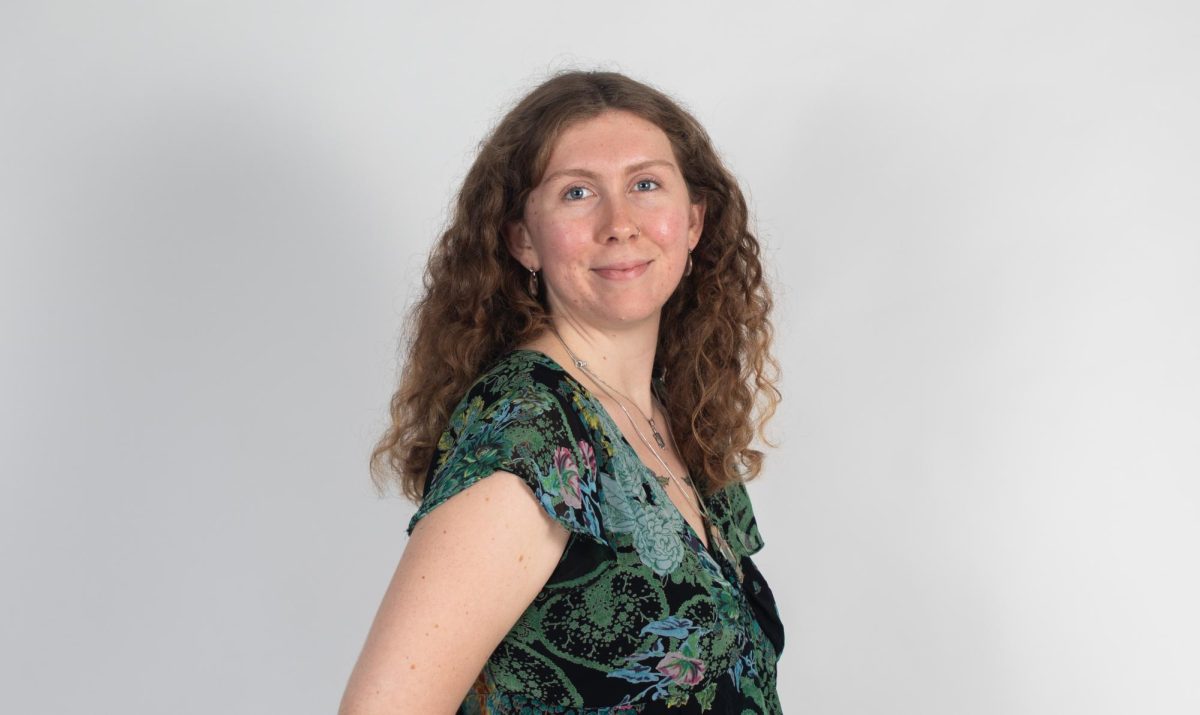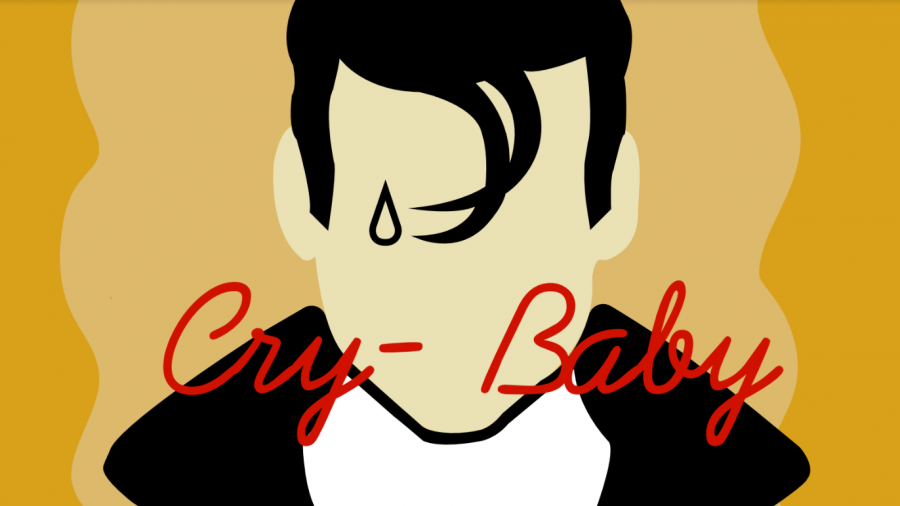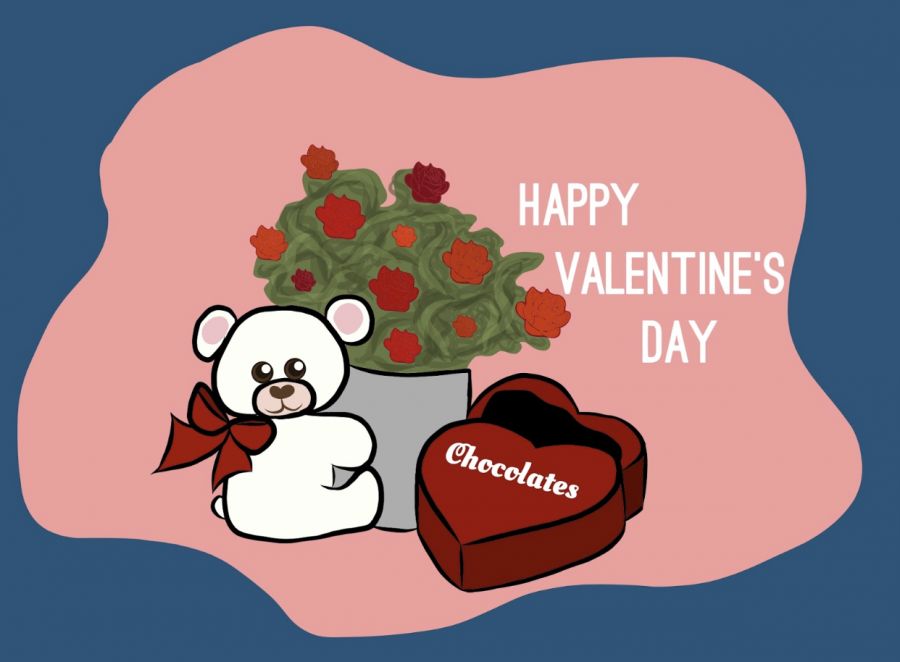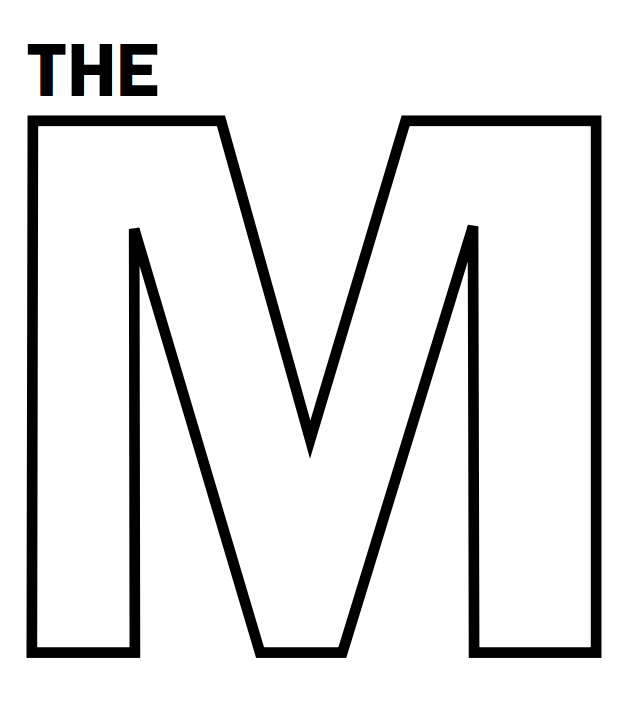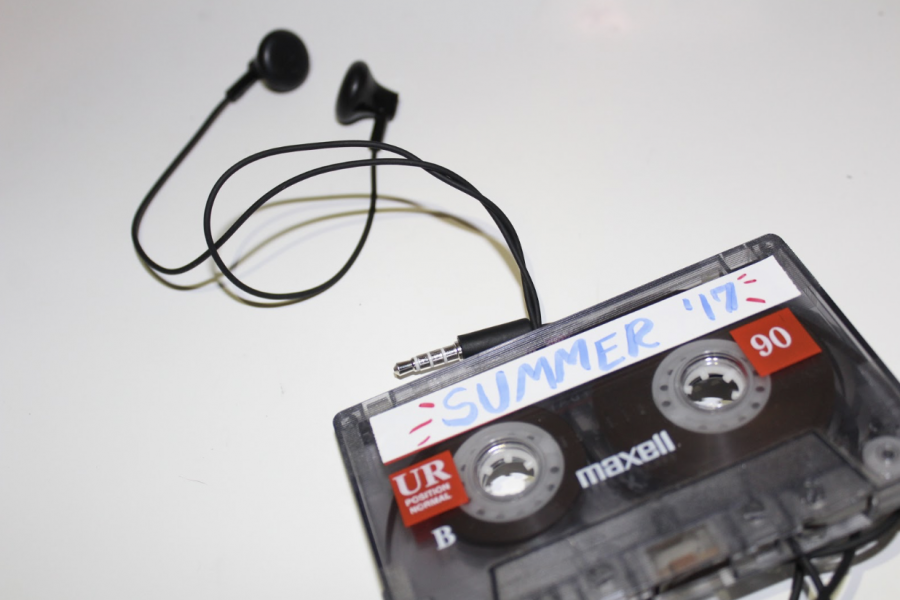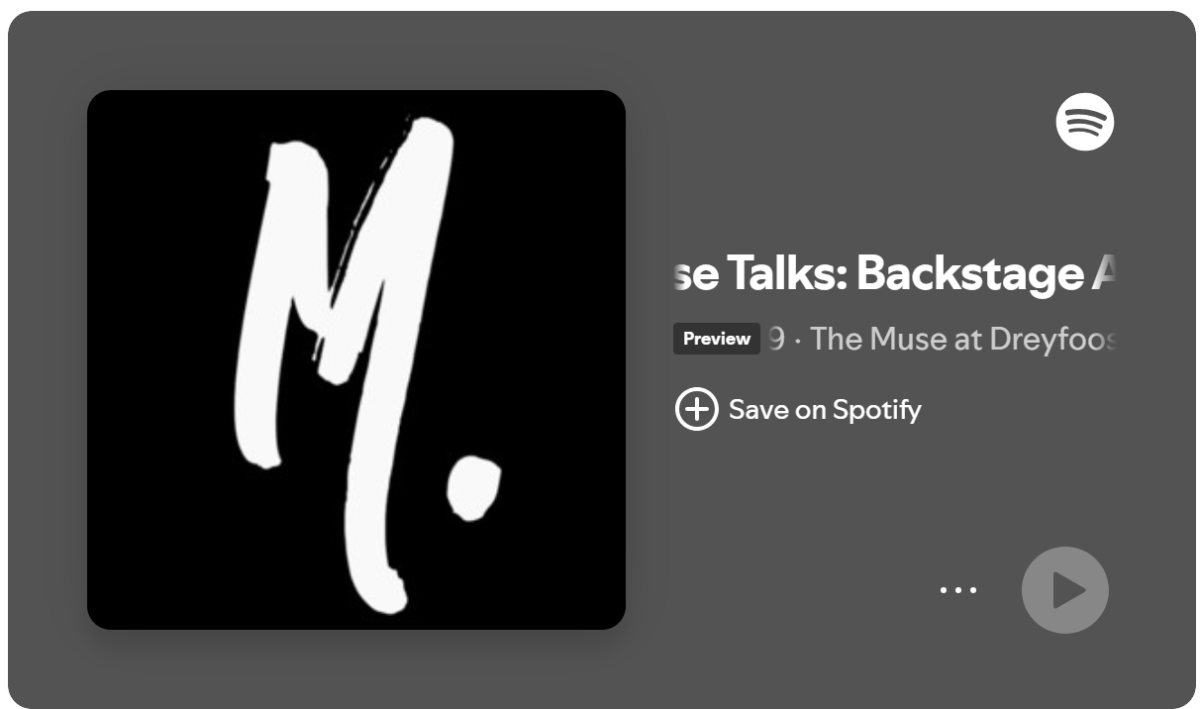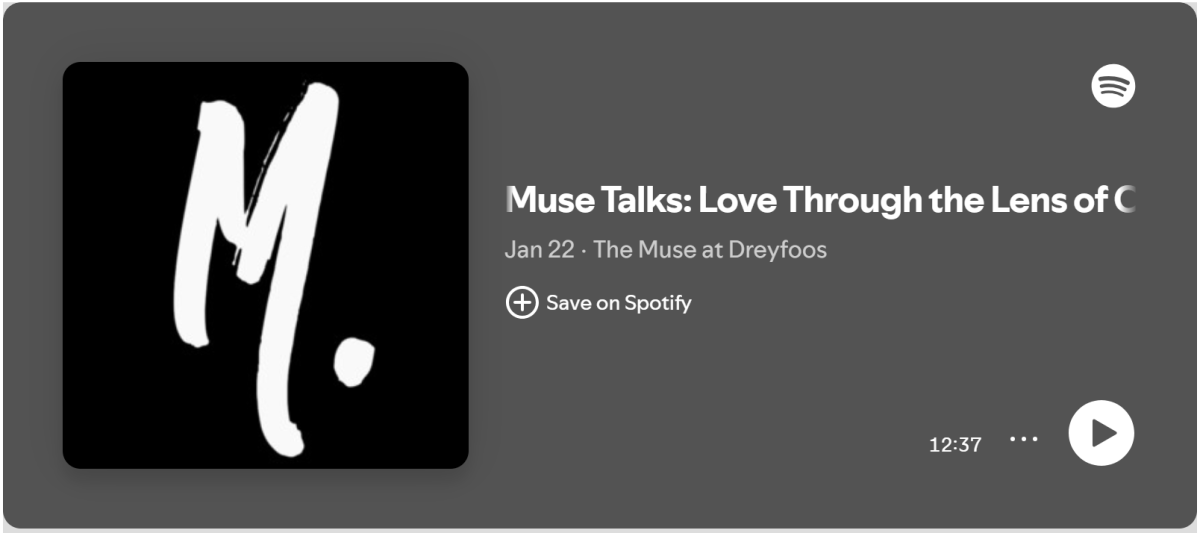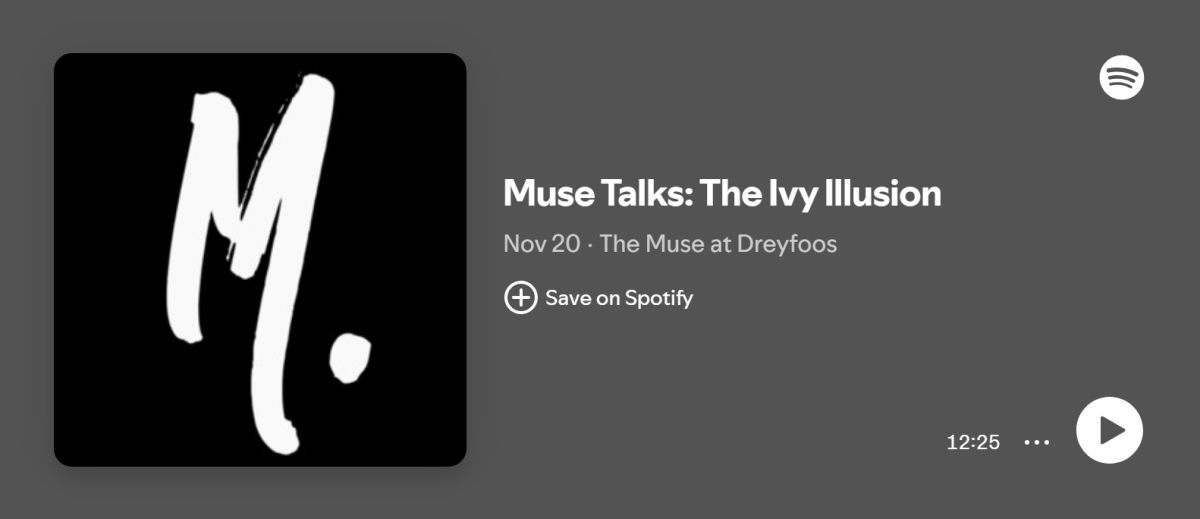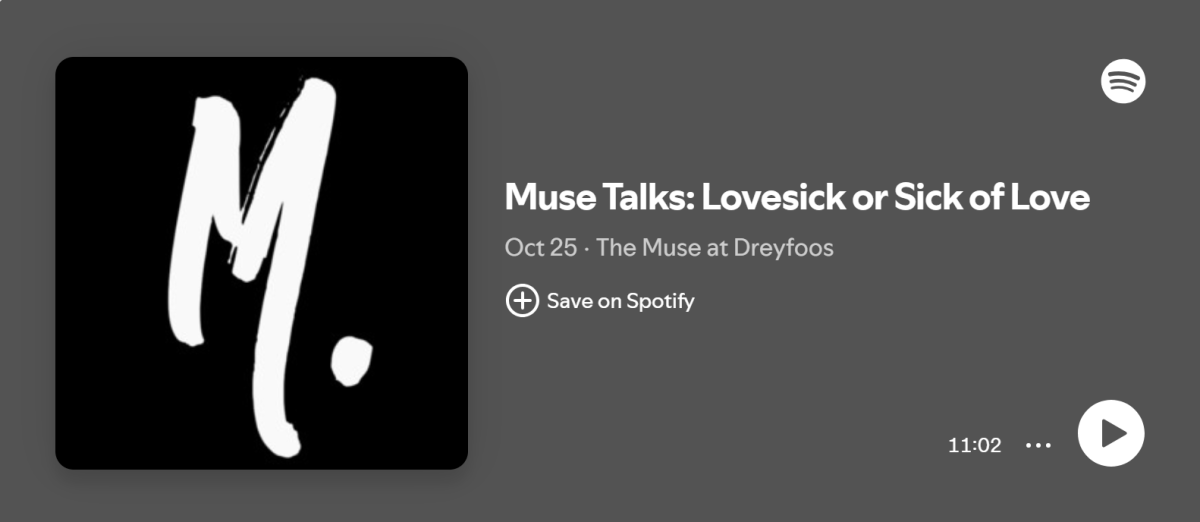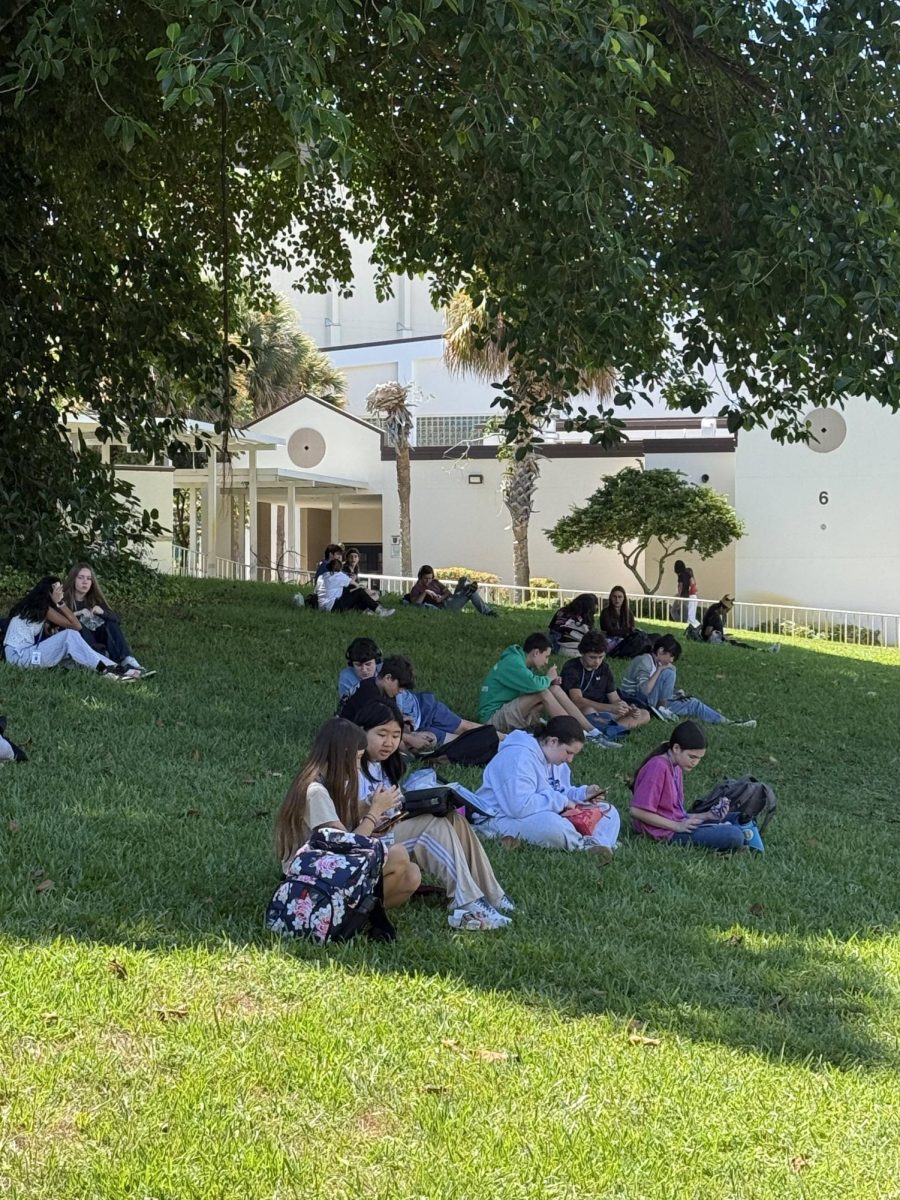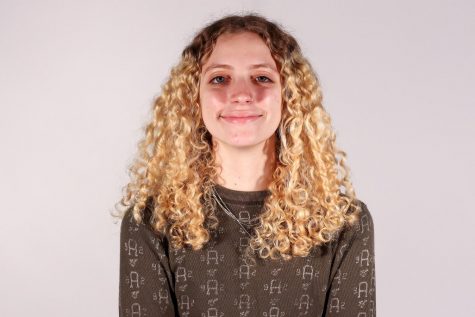The dark blue bandana fluttered to the wind of her ceiling fan, pinned to a small white board in visual senior Amalia Garcia’s room. Draping into a wide range of shapes and taking on different forms, Garcia explains the inspiration behind her cubist piece, “Bandana Diptych.”
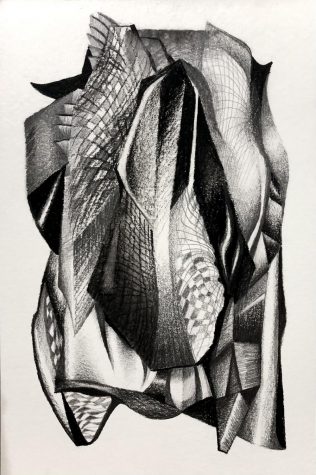
(Photo courtesy of Amalia Garcia)
“My surroundings and how they influence me have become a common factor in most of my work,” Garcia said. “No matter how abstract, I will always find a way to find the ‘meaning’ of the work in my subconscious. For the most part, I find meaning and decipher my influences after I step away from the work.”
The bandana is something she sees every day that reminds her of the place she calls home: Cuba. While Garcia lived in Cuba, she was constantly surrounded by art and was mesmerized by it. Even her baby pictures depict her staring at art pieces.
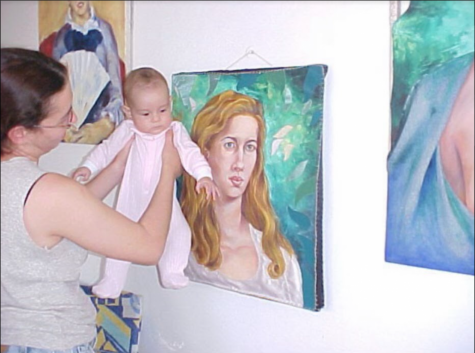
(Photo courtesy of Amalia Garcia)
“[I] was trained very early [on] the rudimentary, yet important, things every artist should know,” Garcia said. “The only three things you need [are] the willingness to learn and make mistakes 99%of the time, passion, and confidence — confidence in the way you share your ideas and progress.”
This confidence and passion is what inspired Garcia to choose her mediums for this piece. “Bandana Diptych” is done in charcoal, graphite, and colored pencil on a piece of heavy paper, typically used for watercolor paintings.
“I’ve always found charcoal to be one of the most difficult, yet rewarding mediums,” Garcia said. “Giving myself a challenge like that is what keeps me engaged. As difficult and frustrating as it can get, having the underside of your nails be black for a week becomes worth it when you see the end result.”
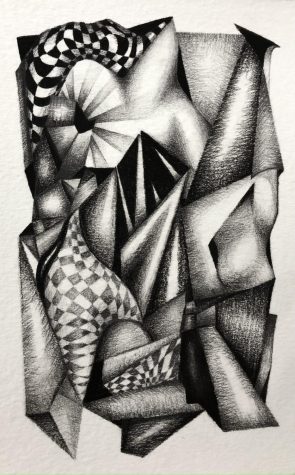
(Photo courtesy of Amalia Garcia)
Garcia’s black fingernails can attest to the diligence that her teachers and peers are able to see in her.
“I’ve noticed that she has a really high standard for herself and if she’s dissatisfied with something she doesn’t stop,” painting teacher Scott Armmeta said. “She’ll work on those things and it comes through in the quality of her work.”
Although working with charcoal proved satisfying to Garcia in the end, this medium imposes complications and intricacies.
“One wrong move, one slip of the hand or a finger, one wrong breath at the wrong time … ” She pauses. “That can completely change the direction the piece is going,” Garica said. “One second you have all straight edges and perfect shading, but you exhaled at the wrong time and your hand moved in the middle of making a hard line, now it looks completely different because you have to change every single other line and shape to match with that mistake.”
Adaption is something that has become normal for Garcia’s process. She says that she “just lets [her] hand do what it wants to do and trusts that [she’s] taking the piece in the right direction.”
“I organically drew out some lines, not really with a specific intention. After that though, it’s just about layering, stepping back to look at it, more layering, then some more layering,” Garcia said. “I’ve conditioned myself to never think about anything I’m doing when making art. I just sort of ‘do’. As intricate as this may look, it’s like breathing or walking to me.”
Even though Garcia’s art comes naturally to her, students who have worked alongside her are able to see her intricacies.
“Amalia’s work has always stood out to me because of how thoughtful and precise her style is,” visual senior Julie Akdag said. “I’ve collaborated with her before and she’s just an amazing artist.”
After her process came to its end, she put her art up in the studio of Building 9 for the Fall Vigital showcase. It hangs there in the thin wooden frame, mimicking the life and body of her dark blue bandana.
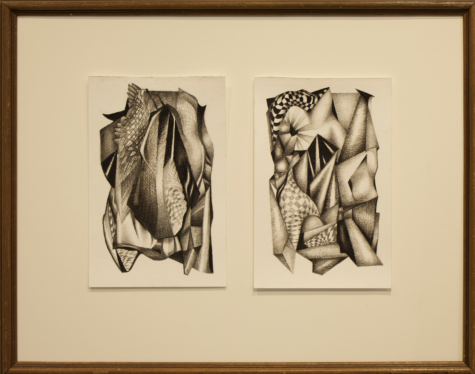
(Anna Jones)
“I’m grateful that people will take time out of their day to read or even look at my process,” Garcia said. “It’s important to showcase these sorts of things because it gets your name out there and may inspire others to keep doing what they love. Or, to create their own rules.”

